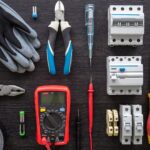Imagine the convenience of smart air purifiers, tirelessly keeping your indoor air fresh and clean. It’s not just about luxury—it’s about ensuring a healthier living space. Yet, when those mysterious error codes start popping up, they can leave you puzzled and your air purifier less effective. Getting acquainted with these codes can be the key to maintaining an efficient, healthy home environment.
- Understanding Error Codes: Learn what the error codes mean and why they appear in your smart air purifier.
- Filter Troubles: Dive into the common filter-related issues and discover simple solutions to keep your device running smoothly.
- Sensor Savvy: Unlock the secrets of air quality sensor error codes and how to troubleshoot these common problems.
By mastering these insights, you’ll gain the confidence to troubleshoot and maintain your smart air purifier, ensuring its optimal performance. Let’s embark on this journey towards a healthier home atmosphere.
Understanding Smart Air Purifier Error Codes: Filter and Air Quality Sensor Solutions
As smart air purifiers become a staple in contemporary households, recognizing error codes is paramount to maintaining their efficiency. These home appliances employ error codes to signal when there are malfunctions within the system, particularly with components such as filters and air quality sensors.
Comprehending these error codes is essential for several reasons. Firstly, they enable users to quickly identify issues that may impact the purifier’s performance. By understanding these signals, homeowners can immediately take corrective actions, ensuring their device is not only functioning optimally but also prolonging its lifespan.
Furthermore, addressing these issues promptly contributes to maintaining a healthy indoor air environment, crucial for improving respiratory health and overall well-being. Efficient air purifiers enhance the quality of life by removing contaminants and allergens, supporting a cleaner, fresher home environment.
Common Filter-Related Error Codes
Filters play a vital role in the operation of air purifiers, as they trap and remove airborne pollutants, allergens, and hazardous particles. Over time, filters can become clogged or worn, leading to a series of error codes commonly associated with these issues.
An error code might indicate that it is time to replace the filter, a task that ensures continued efficiency in air purification. Regular maintenance, such as cleaning or replacing filters, is important for optimal performance. Ignoring these error codes can reduce the system’s ability to clean air effectively, leading to poorer indoor air quality.
By identifying the specific filter-related error code, you can take timely actions to remedy the problem, thus safeguarding your air purifier’s longevity and performance. Understanding these common error codes and taking proactive steps to resolve them can significantly extend the life of your device and enhance its ability to provide clean, breathable air in your home.
Addressing Air Quality Sensor Issues with Smart Air Purifier Error Codes: Filter and Air Quality Sensor Solutions
Air quality sensors are critical components in smart air purifiers as they provide real-time data on the particle levels within your environment. These sensors help maintain optimal air quality, making them integral to your home’s health. However, encountering error codes related to these sensors can be quite common.
Understanding and addressing these smart air purifier sensor error codes can ensure your device continues to function efficiently. Common sensor-related errors often indicate issues with the sensor’s ability to detect and report particle levels accurately. Let’s explore some of these frequent error codes and the steps you can take to troubleshoot and resolve them.
If your purifier displays an error code related to its sensor, the first step is to refer to the manufacturer’s guide as each model may have unique code meanings. Generally, ensuring that the sensors are clean and free from obstruction can resolve many of these issues. Dust and dirt buildup over time can impair sensor function, leading to inaccurate assessments of air quality.
Steps to troubleshoot sensor-related problems:
- Inspect and Clean the Sensor: Regularly clean the sensor using a gentle cloth. Avoid using harsh chemicals that may damage sensor surfaces.
- Restart the Purifier: A simple restart may sometimes resolve minor software errors disrupting the sensor’s readings.
- Update Firmware: Ensure that your purifier’s software is up-to-date. Manufacturers often release firmware updates to improve sensor accuracy and performance.
- Seek Professional Assistance: If the error code persists, it may be useful to consult a professional service to examine and repair potential internal issues.
By keeping your air quality sensors in top condition, you can enjoy a healthier home environment and maximize your air purifier’s efficiency. Regular maintenance and prompt attention to error codes can save you from more significant repairs down the line. Do you have any personal tips or experiences with sensor issues? Share your insights to help others enhance their air purifier performance!
FAQs on Smart Air Purifier Error Codes
What are common filter error codes in smart air purifiers?
Common filter error codes indicate issues such as clogging, need for replacement, or incorrect installation. Check the manual for specific code meanings.
How can I resolve a clogged filter error?
To resolve a clogged filter error, remove the filter, clean or replace it, and ensure it is correctly installed in the unit.
What do air quality sensor error codes signify?
Air quality sensor error codes usually indicate sensor malfunction, dirt accumulation, or connectivity issues. Check and clean the sensor, then reset the device.
How often should I replace the filters in my air purifier?
Typically, filters should be replaced every 6-12 months, but frequency may vary based on usage and manufacturer’s recommendations.
Can I fix sensor errors on my own?
Yes, basic troubleshooting like cleaning the sensor or ensuring proper connectivity may resolve sensor errors. If issues persist, consult a professional.





